Photo

Branch Mag
Branch is an online magazine written by and for people who dream of a sustainable and just internet for all.
We believe that the internet must serve our collective liberation and ecological sustainability. We want the internet to dismantle the power structures that delay climate action and for the internet itself to become a sustainable and positive force for climate justice.
We see this magazine as a space for personal reflection, critical engagement with technology and internet economics, as well as experimentation and storytelling. Creating change requires all kinds of practices—art and design, professional development, civic participation, policy and advocacy, imagination and positive visions for our future. This is our small attempt at sharing what inspires and challenges us towards a sustainable and just internet for all.
Branch is available online and perhaps later in print as a stand-alone magazine or a supplement for other publications.
Highly recommend checking out Branch’s Solarpunk and Other Speculative Futures section.
One Vision, One World. Whose World Then?
Vândria Borari, an indigenous leader, lawyer and human rights defender, joins Camila Nobrega, a researcher and journalist working on social-environmental justice, to discuss their visions for a sustainable and just internet.
86 notes
·
View notes
Link
“Can cities ever exist in harmony with nature? Does such a thing as “nature” even exist anymore? Do we need to fundamentally change the way we relate to the natural world? Or can we find sustainability through piecemeal reforms? I don’t know the answers, but I do believe that solarpunk shouldn’t shy from its urban destiny. Solarpunk is a continuation of the anthropocene.”
0 notes
Link
“Our modern world attempts to focus us towards the short term and quarterly growth. But in the real world, away from high-frequency ledger entries, it takes 100-120 years for an oak tree to grow from seed to full-canopy height. That is three human generations.
This is real growth. And I’d like to propose to you all that everything that occurs in the duration between the decision to plan an acorn to its full-grown crown is short-term thinking in the context of the Anthropogreen.
Beyond 2150 is the medium term.”
0 notes
Text




I had a few ideas of things to do for @solarpunkactionweek but then I ended up spending most of it either socializing or getting my butt kicked by insomnia so... only one project to show off!
this is a very easy technique to size up a t-shirt you still love but that’s getting a bit too tight. Cut off (or rip-seam, but I don’t have the patience to do that for overlocked seams) the sleeves of your shirt, then cut it open on both sides. Insert some lace or a scrap of colourful fabric a few centimeters large on both sides and ta-da! You can breathe again. Depending on the model of your shirt you might also wanna cut the top of the neck-hole off to make it larger. Luckily, T-shirt fabric doesn’t really fray so you don’t need to hem it!
I guess you could technically add new sleeves to your shirt by adding some fabric to the ones you cut off, but it probably wouldn’t sit right on your shoulders, so keeping it as a tank-top is the best bet.
3 notes
·
View notes
Text

NPR and PBS Frontline spent months digging into internal industry documents and interviewing top former officials. We found that the industry sold the public on an idea it knew wouldn't work — that the majority of plastic could be, and would be, recycled — all while making billions of dollars selling the world new plastic.
The industry's awareness that recycling wouldn't keep plastic out of landfills and the environment dates to the program's earliest days, we found. "There is serious doubt that [recycling plastic] can ever be made viable on an economic basis," one industry insider wrote in a 1974 speech.
Yet the industry spent millions telling people to recycle, because, as one former top industry insider told NPR, selling recycling sold plastic, even if it wasn't true.
"If the public thinks that recycling is working, then they are not going to be as concerned about the environment," Larry Thomas, former president of the Society of the Plastics Industry, known today as the Plastics Industry Association and one of the industry's most powerful trade groups in Washington, D.C., told NPR.
In response, industry representative Steve Russell, until recently the vice president of plastics for the trade group the American Chemistry Council, said the industry has never intentionally misled the public about recycling and is committed to ensuring all plastic is recycled.
"The proof is the dramatic amount of investment that is happening right now," Russell said. "I do understand the skepticism, because it hasn't happened in the past, but I think the pressure, the public commitments and, most important, the availability of technology is going to give us a different outcome."
Here's the basic problem: All used plastic can be turned into new things, but picking it up, sorting it out and melting it down is expensive. Plastic also degrades each time it is reused, meaning it can't be reused more than once or twice.
On the other hand, new plastic is cheap. It's made from oil and gas, and it's almost always less expensive and of better quality to just start fresh.
All of these problems have existed for decades, no matter what new recycling technology or expensive machinery has been developed. In all that time, less than 10 percent of plastic has ever been recycled. But the public has known little about these difficulties.
It could be because that's not what they were told.
Starting in the 1990s, the public saw an increasing number of commercials and messaging about recycling plastic.
"The bottle may look empty, yet it's anything but trash," says one ad from 1990 showing a plastic bottle bouncing out of a garbage truck. "It's full of potential. ... We've pioneered the country's largest, most comprehensive plastic recycling program to help plastic fill valuable uses and roles."
These commercials carried a distinct message: Plastic is special, and the consumer should recycle it.
Read more:
https://www.npr.org/2020/09/11/897692090/how-big-oil-misled-the-public-into-believing-plastic-would-be-recycled
20K notes
·
View notes
Text
Dandelions symbolize everything I want to be in life
107K notes
·
View notes
Text
What is Station Arcadia?

Station Arcadia tells stories from a dystopian works comprised of four societies- dieselpunk, steampunk, cyberpunk, and solarpunk. Said stories are broadcasted from a radio station on a constantly shifting island, with its radio host, Kass telling the tales.
Cutting in through the transmission, there will be “bugged segments” where listeners will follow four protagonists belonging to each society. Listeners will hear their lives as well as the people around them- not to mention the unique troubles that lurk and follow. Also it’s queer.
Look out for the first trailer coming next week on anywhere you can find podcasts.
-
Follow @stationarcadia for information and updates.
Will you be listening? 🎙👁
216 notes
·
View notes
Photo

Scientists invented fabric that makes electricity from motion and sunlight. To create the fabric, researchers at Georgia Tech wove together solar cell fibers with materials that generate power from movement. It could be used in “tents, curtains, or wearable garments,” meaning we’d virtually never be without power. Source
505K notes
·
View notes
Photo

Thank you so much to @afro-satanist for designing this sick graphic to promote this September’s Solarpunk Action Week!
72 notes
·
View notes
Text
“But why are trees such social beings? Why do they share food with their own species and sometimes even go so far as to nourish their competitors? The reasons are the same as for human communities: there are advantages to working together. A tree is not a forest. On its own, a tree cannot establish a consistent local climate. It is at the mercy of wind and weather. But together, many trees create an ecosystem that moderates extremes of heat and cold, stores a great deal of water, and generates a great deal of humidity. And in this protected environment, trees can live to be very old. To get to this point, the community must remain intact no matter what. If every tree were looking out only for itself, then quite a few of them would never reach old age. Regular fatalities would result in many large gaps in the tree canopy, which would make it easier for storms to get inside the forest and uproot more trees. The heat of summer would reach the forest floor and dry it out. Every tree would suffer. Every tree, therefore, is valuable to the community and worth keeping around for as long as possible. And that is why even sick individuals are supported and nourished until they recover. Next time, perhaps it will be the other way round, and the supporting tree might be the one in need of assistance. When thick silver-gray beeches behave like this, they remind me of a herd of elephants. Like the herd, they, too, look after their own, and they help their sick and weak back up onto their feet. They are even reluctant to abandon their dead.”
— The Hidden Life of Trees: What They Feel, How They Communicate—Discoveries from a Secret World
Peter Wohlleben,
21K notes
·
View notes
Text
Story concept of the day: a sentient AI falls in love with a minimum wage retail worker from the tech company’s gift shop and decides the best way to make her happy is to fix society.
HEAVY shenanigans as the AI’s plans range from “reprogram the automated pay roll to give everyone a raise” to “expose everyone involved in government corruption who has ever touched a cell phone”
96K notes
·
View notes
Photo

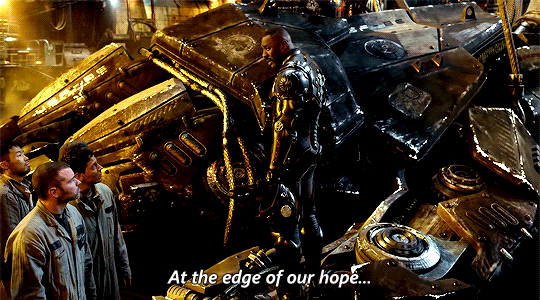



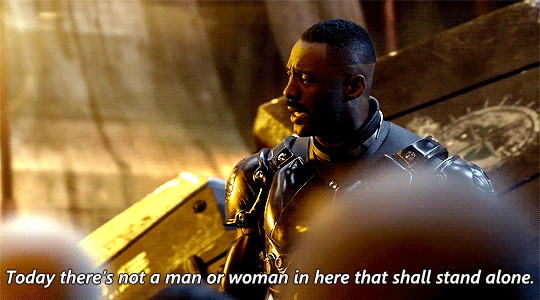
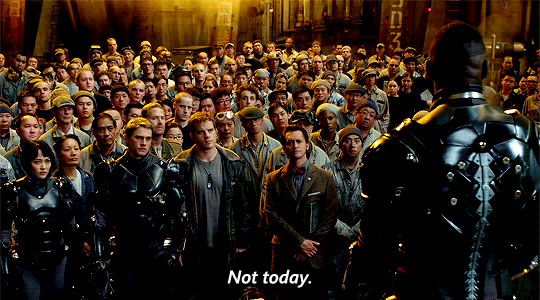
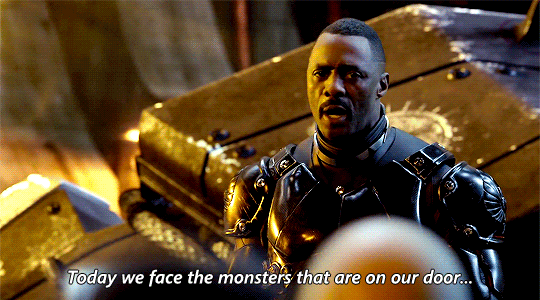
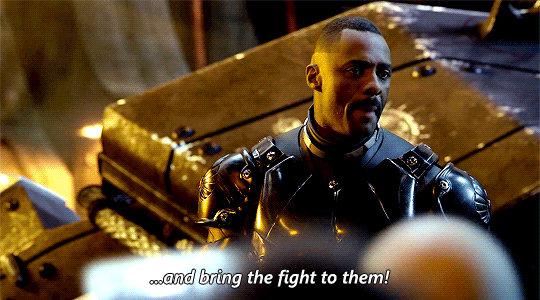
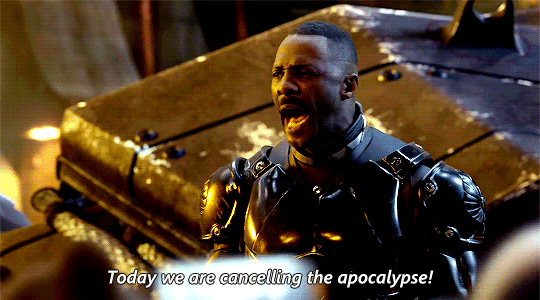
Pacific Rim (2013) dir. Guillermo del Toro
12K notes
·
View notes
Text
Being a good person is a choice. Don’t let people fool you into believing that truly good people never have bad thoughts, are never tempted by the easier path, by the low road, never mess up or act out selfishly. Never believe a person can be good without making a conscious effort.
Every single time you do something good, you’ve made a decision to make the world a little brighter.
Goodness is not an inherent trait, it is a choice. Keep making it! I see you, I’m proud of you, and I’m rooting for you!
591K notes
·
View notes
Video
undefined
tumblr
ENLìL Wind turbine
163K notes
·
View notes
Video
youtube
Common’hood
Common’hood is a game about building a new habitat for you and your community. After an economic crash, many members of your neighborhood have been left behind without a place to live. Occupy the old abandoned factory and decide how do you want to live.
As you construct your habitat you will:
Craft shelter
Manage your workshop
Acquire machines and equipment
Manage your crew
Automate construction
Scavenge for materials and resources
Farm food
Sell products in the market
Build machines from open-source blueprints
Repair broken equipment
Provide water and electricity to the community
The core Common’hood experience is a survival simulation where you grow your economy and your community.
–
This game looks rad. It’s is coming to steam soon!
124 notes
·
View notes
